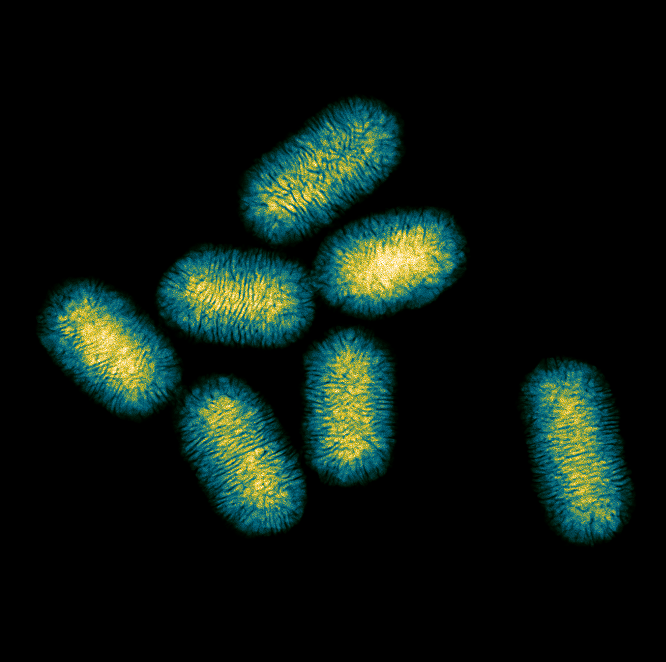
Researchers from the CIC biomaGUNE Cooperative Research Center on Biomaterials have developed, under the direction of Professor Ikerbasque Luis Liz Marzán, a mechanism by which gold atoms are deposited by chemical reduction on previously formed gold nanocylinders, so that a structure is obtained quasihelicoidal (the particles acquire chirality). This geometry allows these "nanoscrews" to interact with light with a circular polarization in a much more efficient way than that obtained with any other known object. These properties could lead to detecting biomolecules in a very selective and highly sensitive way. It is a versatile, reproducible and scalable mechanism for the manufacture of nanoparticles with high chiral optical activity. The prestigious scientific journal Science has echoed this research work.
There are many fields in which the interaction between light and matter is used for substance detection. Basically, light falls on matter, and is absorbed or reflected in an intense and highly selective way depending on the size and geometry of the particle and the type of incident light. The research group led by Luis Liz Marzán, who works in the field known as nanoplasmonics, uses nanoparticles of noble metals such as gold and silver, "because light interacts in a special way with this type of particle in these dimensions" explains Liz Marzán, Scientific Director of CIC biomaGUNE—. In this case, we have studied the interaction of these chiral gold nanoparticles with light that has circular polarization. "
Normally the light is not polarized, that is, the waves expand in virtually any orientation within the light beam. “When it is polarized, the wave only goes in one direction; When the rotated wave is circularly polarized, it rotates either clockwise or counterclockwise” adds the researcher. "Chiral substances can preferably absorb light of a certain circular polarization, with respect to the opposite one”.
Chirality is a phenomenon that occurs at all scales: a chiral object and its mirror image cannot overlap; for example, one hand is the mirror image of the other, they are identical, but if they overlap each other, the position of the fingers does not match. The same occurs “in some biomolecules; and the fact that a molecule cannot overlap with its mirror image is the origin of many biological processes. For example, some diseases originate due to the loss of recognition of one of the two forms of the chiral substance that is responsible for a specific action”, Liz Marzán details.
Three-dimensional manufacturing above a nanometer object
As Professor Ikerbasque explains, "what we have done is to look for a mechanism that directs the deposition of gold atoms on previously made cylinder-shaped nanoparticles, so that these atoms are deposited following a practically helical structure, a kind of "nanoscrew". In this way, the particle itself acquires a chiral geometry. This new strategy is based on a supramolecular chemistry mechanism, that is, on structures obtained by association of molecules with each other, without forming chemical bonds". Liz Marzán affirms that “this really means getting to control the structure of matter on a nanometric scale, but within the same nanoparticle; that is, it is three-dimensional manufacturing above a nanometric object. It is really almost deciding atom by atom where they have to be placed, to obtain a structure that is really complicated”.
To grow these nanoparticles, “the cylindrical particles are surrounded by soap, surfactant molecules. In the middle of the usual soap molecules we have placed additives with molecular chirality, so that the supramolecular interaction causes their organization on the surface of the metal cylinder with an approximately helical structure, in turn directing the growth of the metal with that same structure, which gives it the chirality that we seek. As a result, we have virtually the highest circular polarized light spectrometric detection efficiencies achieved so far.”
Liz Marzán affirms that the process can be generalized to other types of materials: “We have observed that applying the same strategy, platinum atoms can be deposited on gold nano-cylinders with the same helical structure. This opens up many possibilities both for applications of its optical properties and others in the field of catalysis (platinum is a very efficient catalyst). It can also lead to vastly improved synthesis of chiral molecules that may have biological and therapeutic relevance". Also, this mechanism could be applied for new biomedical imaging techniques, for the manufacture of sensors, etc. "We are convinced that this work will open many avenues for other researchers, precisely because of the generalization of the mechanism that can be used with many different molecules. We have a lot of work ahead of us” he says.
The research has been developed and coordinated by CIC biomaGUNE, but they have had the collaboration of research groups from other entities, among which are the Complutense University of Madrid (computational calculations that demonstrate the formation of helical structures when mixing the two types of surfactants), the University of Vigo and the University of Extremadura (theoretical calculations of the optical properties of the particles) and the University of Antwerp (obtaining three-dimensional electron microscopy images and animated reconstruction of the manufactured particles).
.png)
